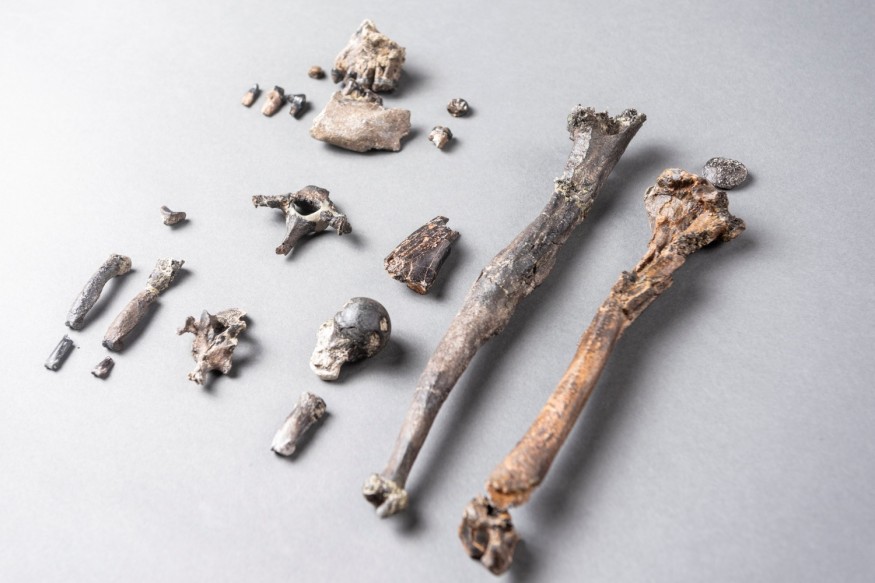
A previously unknown fossil is said to be that of an ancient human who walked upright and has lived around 12 million years ago, a recent study revealed. The findings, published in the journal Nature, dramatically altered the timeline of human evolution.
Initially, scientists thought ancient humans began walking on two feet around six million years ago, based on the fossils found in Africa. But these fossils found in Bavaria in the south of Germany have human-like characteristics and have lived six million years earlier than the previously known fossils.
A team led by Madelaine Bohme from the University of Tübingen excavated a clay pit in Bavaria and found the remains of four individual primates they called Danuvius. One of these remains is a complete skeleton of a male specie.
The bone structure is similar to modern-day bonobos, but after analyzing the functionality of important joints like elbow, hip, knee and ankle, they were certain the bones are much closer to a human in resemblance than to a great ape, according to Bohme.
The Danuvius has an S-shaped spine that allowed the body to be upright while standing on two feet, but due to its "powerful, opposable" big toes, it can grasp large and small branches securely and climb like an ape, said co-author Nikolai Spassov of the Bulgarian Academy of Science. Modern-day humans, which is the only remaining hominids or bipedal primates, do not have this feature.
Danuvius's height was about a meter (3.3 feet) while they weighed around 31 kilos for males and 18 kilos for females. They were much smaller and much lighter than the modern age apes.
Another notable feature is the broad and flat rib cage and elongated lower back. According to the press release from the University of Tübingen, this helped position the center of gravity on bipeds.
The Missing Link
About ten years ago, a nine-year-old boy Matthew Berger tripped over a rock while running after his dog on the Malapa Fossil Site, which is known as the "Cradle of Humankind" in South Africa. But upon examining it, it was actually not just an ordinary rock but a fossil of what is now known as Australopithecus sebida.
The said fossil sparked scientific debate. Some scientists deny that it is a previously undiscovered species while others said it does not belong to the genus of modern humans.
It was not until earlier this year when researchers finally established it as "closely linked" to Homo genus, making it the "bridging species" between early humans and earlier species.
According to a study published in the journal Paleonthropology, A. sebida lived between the era of the three million-year-old "Lucy" and Homo habilis, the first humans who used tools that lived about 1.5 million to 2.1 million years ago.
A. sebida's hands and feet suggested that they can swing from tree to tree. Scientists suspected that it is primarily due to foraging and by running away from predators.
But their grasping ability suggested that they can use tools too, just like the Homo habilis.
The funny way of how the fossil was discovered is a reminder that there are still more to know about how humans evolved to what we are now, the authors concluded.
© 2025 NatureWorldNews.com All rights reserved. Do not reproduce without permission.





